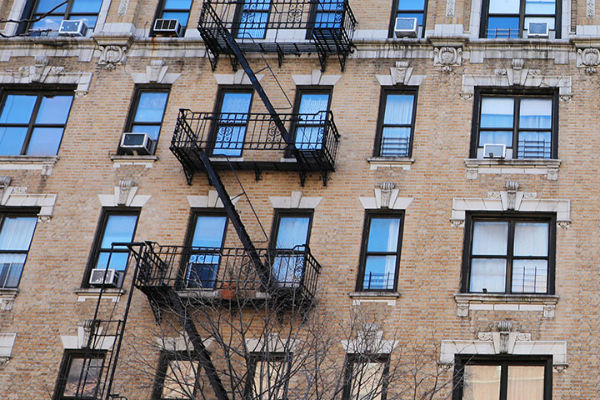 An East Harlem nonprofit announced last week that it had purchased four apartment buildings from the city with the goal of turning them into permanently affordable housing, in what advocates called a historic deal that could pave the way for a new model to take hold citywide.
An East Harlem nonprofit announced last week that it had purchased four apartment buildings from the city with the goal of turning them into permanently affordable housing, in what advocates called a historic deal that could pave the way for a new model to take hold citywide.
The East Harlem El Barrio Community Land Trust (EHEBCLT), along with two community housing developers, closed Nov. 23 on a deal with the city to purchase the buildings — three in East Harlem and one in Central Harlem — for $1 each.
Of the 36 apartments, 14 will be available to tenants earning 35 percent of the area median income — about $36,800 for a single person — and 18 will be open to those earning 100 percent of AMI. The remaining four units will be reserved for people experiencing homelessness.
Last week’s deal represented the culmination of a yearslong effort by housing and homelessness advocates to bring the community land trust (CLT) model to the neighborhood. A CLT consists of a nonprofit that owns land and partners with a community group to rent out the housing on top of it, typically through a 99-year lease requiring that it remain affordable.
The East Harlem CLT is just the second in New York City to ever acquire land from the city, following Cooper Square on the Lower East Side, which did so in 1991.
“I was worried about my community, I was worried about my friends, family, how they’re all pushed out of the community because they can’t afford the rent,” Rosa Custodio, vice president of the EHEBCLT, told Patch last week.
A growing movement
Advocates in the growing CLT movement, which was pioneered in the 1960s by Black farmers in Georgia, say it is a uniquely effective way of keeping down housing costs and ensuring that the community retains a say in how the property is managed.
“The CLT mission is really stewarding the land and ensuring that it’s used for community benefit in perpetuity,” said Julia Duranti-Martínez, board secretary of the EHEBCLT.
The work in East Harlem began more than a decade ago, in discussions between members of the advocacy group Picture the Homeless about how the city’s vacant properties could be repurposed to shelter unhoused New Yorkers. By 2011, the group had produced a report which found that 3,551 vacant buildings across the city could house as many as 71,700 people.
The group teamed up with CUNY professors on subsequent research on vacancies, and they won early support from elected officials including then-Councilmember Melissa Mark-Viverito and Scott Stringer, who was then Manhattan Borough President.
Working in concert with CLT advocates from other boroughs, the EHEBCLT formed in 2014 as a pilot project “to help show that CLTs were viable in New York City,” Duranti-Martínez said.
“There was quite a bit of skepticism generally that CLTs could be implemented and grown in the current context,” she said, noting that the Cooper Square CLT arose decades earlier, in the aftermath of an abandoned urban renewal effort.
Of more than a dozen CLTs currently operating or being planned in the city, the East Harlem CLT is the first to acquire city-owned land since the 1990s. A number of CLTs received a $750,000 boost from the City Council in its 2019 budget, helping fuel the programs’ expansion.
Advocates hope to expand well beyond these initial 36 units. Lynn Lewis, an EHEBCLT board member, told City Limits in 2018 that the group “would like all the city-owned properties in East Harlem to be taken off the table” and transferred to CLTs, creating thousands of new units.
In the meantime, the East Harlem CLT is focused on rehabilitating the four newly-acquired buildings, hoping to complete renovations within the next two years. Of the four buildings, two are partially occupied and two others are vacant, although one of those two is still connected to tenants who were displaced years ago due to poor living conditions, according to project coordinator Athena Bernkopf.
Last week’s deal was widely hailed after the CLT announced it on Twitter, with fellow housing advocates calling the agreement “inspiring.”
“CLTs are a critical part of the solution to our city’s affordability crisis,” Councilmember Diana Ayala, who represents East Harlem and the South Bronx, said in a statement reports Patch.
“After supporting the development of the East Harlem El Barrio CLT, I am thrilled to see them take this important step toward preserving community-controlled, deeply affordable housing in East Harlem for generations to come.”
Become a Harlem Insider!
By submitting this form, you are consenting to receive marketing emails from: . You can revoke your consent to receive emails at any time by using the SafeUnsubscribe® link, found at the bottom of every email. Emails are serviced by Constant Contact








